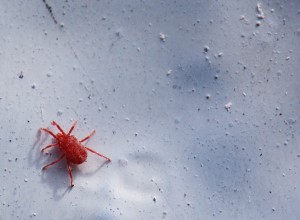FAQ: Hydroponics and Spider Mite control using MiteShield
Posted: February 4, 2013 Filed under: FAQ, Hydroponics, MiteShield, Spider Mite Control | Tags: hydroponics systems, hyrdoponics, mites, miteshield, non-toxic, organic, organic spider mite control, spider, spider mite control, spider mites Leave a comment »For Spider Mite control in hydroponics systems, simply prepare using the standard instructions using 2 litres for every 10 plants on the system, or 200ml of prepared solution per plant.
Pour this solution into the reservoir and allow it to circulate for 12 hours – but not more than a 24 hours. If you are using Coco – you may water each individual plant with 200ml of the solution.
Hydroponics and clearing MiteShield using UV light after treatment.
In a Hydroponics system the risk is that MiteShield will continually circulate in the water and ‘overdose’ the plant. It’s not a good idea to overstimulate your plants with MiteShield this way.
To avoid this from happening, we advise that once the treatment period explained above is completed, the circulating water in your hydroponics system be exposed to UV light at some point in the circuit – typically the reservoir.
The UV light can be introduced in a few different ways
- Halogen bulbs emit sufficient UV light for the MiteShield to be denatured. However, many of these bulbs have UV filters. Check with your manufacturer to find out which type you have. If you’re growing indoors using Halogen bulbs which emit UV light, then no further steps may be necessary.
- A standard, inexpensive fish-tank UV light can be shone into the reservoir for between 2-6 hours – enough time for all the water in the circuit to be exposed to it. You can also buy inexpensive blacklight/UV lightbulbs that fit in standard sockets from hardware shops, pet shops or online.
- The UV light in direct sunlight will also do the trick.
After MiteShield has been applied and mixed into the hydroponics system, shine your UV light into the reservoir for at least 3 hours with the water circulating to denature the preparation.
Now sit back and watch the mites gradually clear off your plants over the course of two to six days.
Get rid of spider mites organically with Miteshield – Siobhan’s story
Posted: September 25, 2012 Filed under: MiteShield, Spider Mite Control, Spider Mites, Testimonials | Tags: control, get rid of spider mites, get rid of spider mites organically, horticulture, hydroponics, hydroponics systems, infestation, mite infestation, organic, Red Spider Mite, removal, spider mite, spidermite Leave a comment »Get rid of spider mites on your plants naturally, even when you think you have no time to spare, with MiteShield.
It is crucial, especially when you see one plant infestation and just know it’s likely to spread to get rid of spider mites quickly.
One MiteShield user, Siobhán, wrote back to us about her plants, which were infested with spider mites, with one plant in particular being the ‘typhoid mary’ of the group.
All our plants had mites, so when your sample arrived we applied it as per the instructions. It seemed like they totally disappeared the first day and nothing the 2nd day but the 3rd day i saw 3 alive only, then they died later on id say cuz I can’t find em any more!
The worst plant was not totally beyond saving and hasn’t deteriorated at all, the other ones are growing better immediately. thank you!
Siobhan M.
A quick result, thankfully – thanks for taking the time to contact us Siobhán – we’re delighted with your feedback 🙂
Get rid of spider mites naturally with MiteShield
If you find yourself in the same situation as Siobhán, with no time to lose to get rid of your spider mite infestation, you may reach for the sprays first to stop their spread.
Consider this, however – spraying may be interfering with the integrity of the flowers or herbs, which have their own subtle balance of volatile oils which you may not care to disrupt. Instead, Reach for MiteShield – prepare, water, wait for 3 days (usually) and watch them go away.
No need to go reaching for any toxic chemicals or spraying alcohol and volatile oils like Neem onto your plants. The sprays will effect the plant’s crop – especially if it’s being grown to be eaten or used medicinally.


